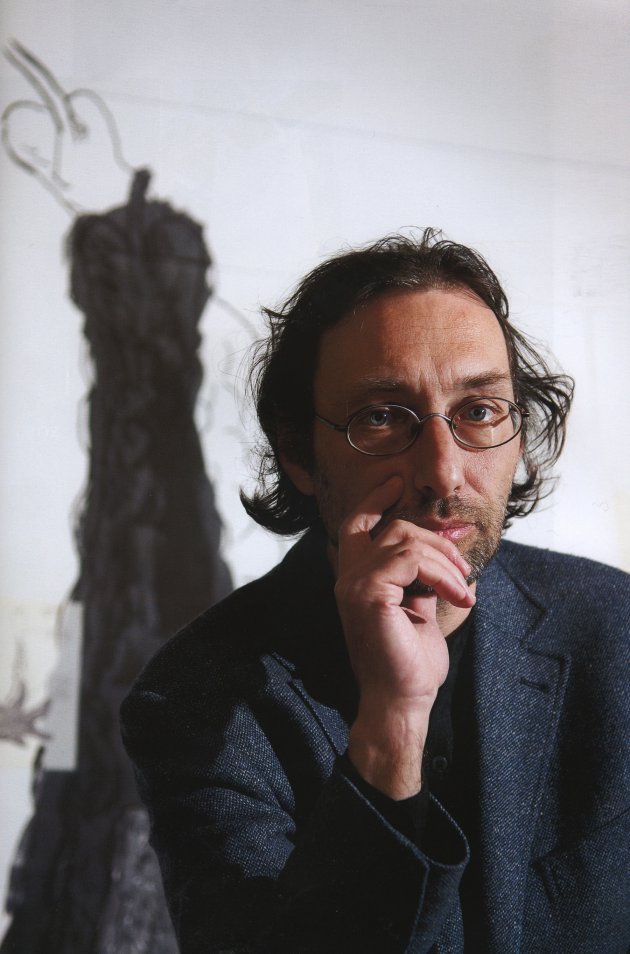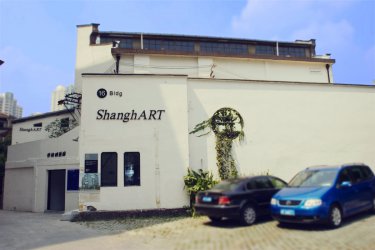Talking To: Lorenz Helbling
 Known as one of Shanghai’s and greater China’s most respected galleries, ShanghART is the home of thousands of works by over 50 renowned Chinese artists. However, when owner Lorenz Helbling first opened his gallery in 1996 in Shanghai, the art scene and the city itself were completely different…
Known as one of Shanghai’s and greater China’s most respected galleries, ShanghART is the home of thousands of works by over 50 renowned Chinese artists. However, when owner Lorenz Helbling first opened his gallery in 1996 in Shanghai, the art scene and the city itself were completely different…
Talking with Lorenz Helbling, one can feel an intense passion for art underneath the introversion of his scraggly, bespectacled exterior. As he answers questions about the journey that he’s been through over the last 15 years with ShanghART, he responds with a openness to each question that reveals not just his own character, but also an intimate knowledge of the unwieldy contingencies that are contemporary art. In defining the Chinese contemporary art world he says, “Everyone tries to say what exactly that is. My answer is that I try to be curious and open. I know maybe more what it’s not than what it is.”
Helbling’s journey to China began in 1985 when he left his native Switzerland to enrol in a course of Chinese language at Shanghai’s Fudan University. “It was pull and push [that brought me here]. I was studying history and art history and I wanted to get away. I thought [by choosing to study] Chinese, I could at least go to China.”
After extending his study further for another year at Fudan, Helbling returned to Switzerland where he completed a Master’s degree in history at the University of Zurich. However, China left a strong impact on him and in 1992 Helbling sought to return to China, but found himself instead in its close neighbour, Hong Kong. “At the time, I was learning more about Chinese movies. But in 1992, when cinema wasn’t at its peak of interest, I went to Hong Kong and saw [mainland Chinese] art there and became interested in it. So I got a job at a gallery there.”
And while his position working for the Wangyutang Gallery in Hong Kong afforded Helbling the chance to interact with mainland Chinese art, he became increasingly drawn to the source. “There was much more going on in China than in the shops in Hong Kong; it was very commercial. I knew that sooner or later China would open up and people would be going there to do things.”
And so Helbling landed again in Shanghai in 1995, knowing that he wanted to find his niche in the Shanghai art world, and possibly open a gallery.
But the path at that time was anything but clear. “People thought it was a stupid idea then. They said 'You can’t open a gallery in China. There is no art and everything is difficult. There is no market.' And it was a different Shanghai and China to what we know now. In 1995 there was no highway; the Portman [Ritz Carlton] was basically the only hotel. Foreigners didn’t go further than 50 metres from the Portman. If you walked down to Huaihai [Zhong] Lu people would stare at you.”
Shanghai’s art scene was almost non-existent compared to where it stands today as a burgeoning international art centre, second in China only to Beijing. “There were a small group of artists working in Shanghai, but nobody could see them. If you went to an exhibition, it was a few artists and nothing else, and a lot of smoke. There were artists around who had been active for 10 to 15 years, but it was a small fringe thing.”
In 1996, Helbling started ShanghART, drawing on Shanghai’s largely unknown local talent. And while meeting these artists proved easy, Helbling found that making sense of the art he was dealing with still proved to be a difficulty. “I’d studied art history, but still I’d go into a studio and have no idea what to think about a work. From what I learned, everything was telling me ‘no, get out of this studio, what you’re looking at is totally wrong.’ In the 90s, photos were all over the world [in galleries] and here it was people sitting in a studio smoking and doing oil paintings. In Zurich everyone would say ‘forget it, you missed the time’; but at the same time I looked at it and I said, ‘he’s up to something’. So I had to forget about what I knew and take a chance.”
More than 15 years later, it’s apparent that Helbling has been instrumental in the proliferation of the Chinese contemporary art scene, but getting to this point hasn’t been easy. Putting on fine art shows requires an immense amount of dedication and coordination. “At the beginning it was more like exhibition after exhibition and it could get quite tiring. Then you’d stop for a while and say, ‘Oh I should do an exhibition’ and do three or four in one spurt. It’s a lot smoother now, but there are still a lot of things to do.”
Currently Helbling has been working to exhibit two works by eminent Chinese film artist Yang Fudong in at the Beijing branch of ShanghART. According to him, it’s the most difficult project he’s dealt with yet. “We had to work very closely with the gallery because each work is a ten- screen video. It cost a fortune. They’re two great works that have been shown in the Tate Museum and in museums all over the world, but never shown in China. Somebody has to do this job.”
screen video. It cost a fortune. They’re two great works that have been shown in the Tate Museum and in museums all over the world, but never shown in China. Somebody has to do this job.”
But even more than his sense of duty that he has toward art, deep down Helbling still finds a place for art for art’s sake. “If nothing works [to keep me going], it’s looking at the works. It’s rewarding. It’s surprising. Something comes back.”
ShanghART Gallery Main Space. Bldg 16, 50 Moganshan Lu, near Changhua Lu. Tel: 6359 3923, Web: www.shanghartgallery.com

